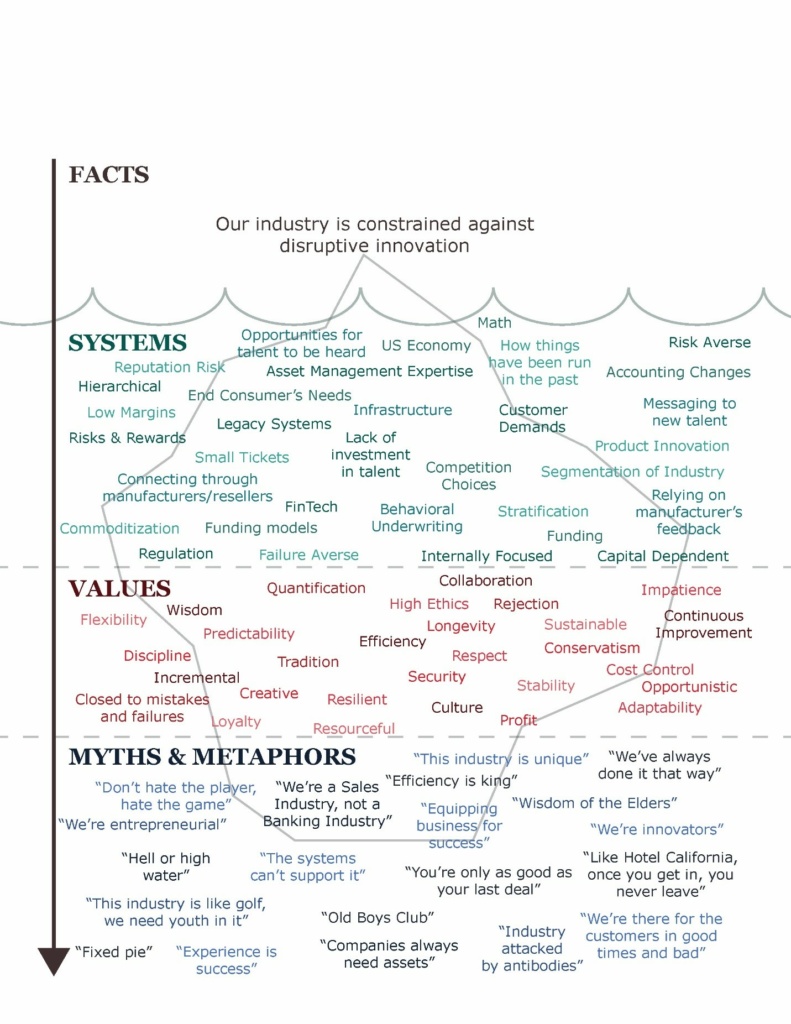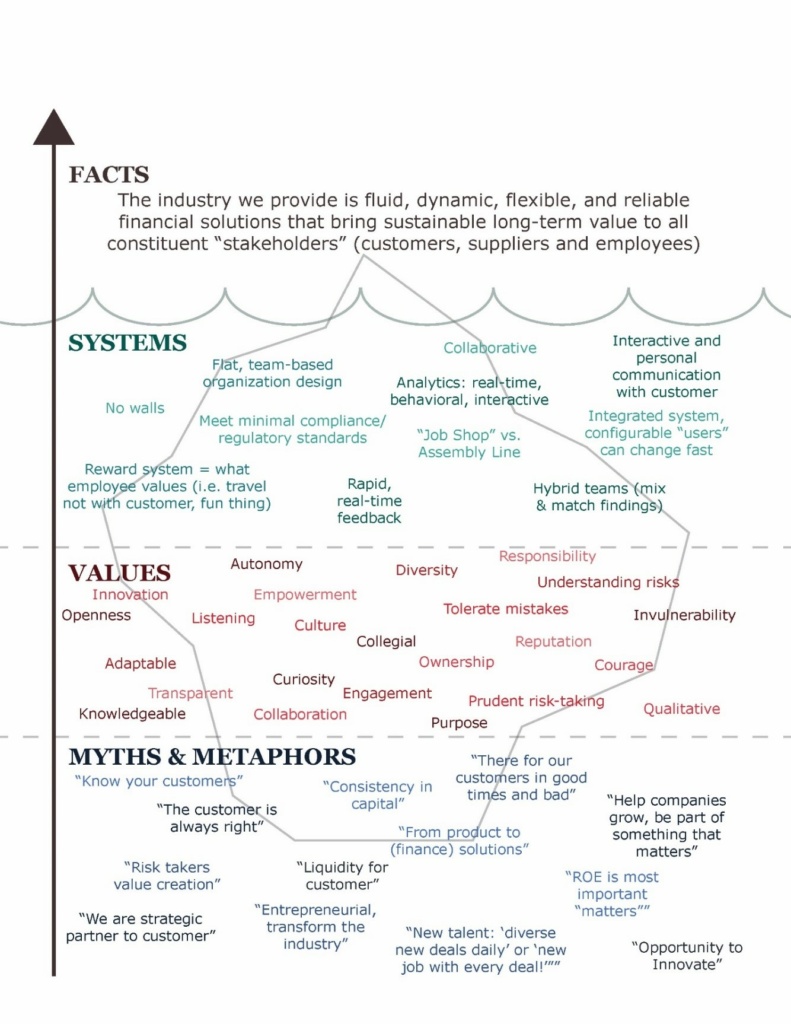Equipment Leasing Foundation Case Study

Change management efforts often fail because they focus on the issues as they bubble up to the surface. The result is Band-Aid solutions that fail to address the underlying culture and guiding narratives of an organization. To achieve long-lasting change, we must explore what is beneath the obvious to understand why this issue exists in the first place. Foresight uncovers the dynamics of our present story while also creating pathways to our preferred outcomes.
We all have a natural filter for information. It is what keeps us sane in a world that is constantly bombarding our senses with data. Unfortunately, in an environment of volatile change this filtration system can lead us to unconsciously discount new opportunities if they do not line up with our established perspectives. Foresight helps us to overcome the tendency to interpret new information in terms of old beliefs and allows us to challenge our mental models. When we get past our biases, we are open to different ways of perceiving the world around us.
The Equipment Leasing and Finance Foundation is a non-profit organization dedicated to inspiring thoughtful innovation and contributing to the betterment of the equipment leasing and finance industry. The Foundation’s mission is to provide comprehensive, forward-looking research for business leaders, analysts and others interested in the industry.
In January, 2016, the Equipment Leasing and Finance Foundation convened its annual Industry Future Council (IFC). The IFC brings together industry leaders with wide-ranging experience and points of view to discuss the future possibilities for equipment finance. The IFC is unique due to both its participants (senior leaders from different organizations throughout the commercial equipment finance industry) and its long-term time perspective (the group considers what may happen to the industry up to ten years into the future). Kedge facilitated the two-day session and authored the subsequent report which captured the results of the group’s best thinking while offering readers new strategies and mental frameworks for thinking about the industry and its future.
2016 IFC Report excerpt:
“By employing a rigorous Strategic Foresight model during its two-day meeting, the 2016 IFC demonstrated the power of “futures thinking” to gain perspective, to challenge conventional thinking and to develop a compelling vision of the opportunity that lies ahead. The change in the mindsets of the participants across the two days was significant. A group whose dialogue on day one centered on the frustrations of today’s regulatory environment and the industry’s inability to be disruptive was transformed on day two when they optimistically identified opportunities in adjacent industries and created aspirational narratives that were both customer and talent-centric. Issues expressed as concerns on day one such as “the impact of technology on relationships” became sources of innovation (i.e., “How are relationships reframed with the benefit of new technology?”). Further, it was interesting to note that despite much discussion to the contrary, the various sectors of the industry represented at the Council ultimately shared many common perspectives on the future, including both strategic opportunities and allies.
When we approach innovation from the today’s perspective, we tend to automatically and subconsciously filter new information through a limited lens. Approaching change from the lens of alternative futures frees us to think far beyond our present-day obstacles and constraints, granting us the vision of the untapped opportunities that we can gain rather than the known commodities that we can lose. It’s in this way that new pathways to aspirational futures are created.”
Here are examples of how the group used UNESCO Chair in Futures Studies Sohail Inayatullah’s Causal Layered Analysis (CLA) tool to uncover the roots of their issue and map a more aspirational outcome.



